Introduction
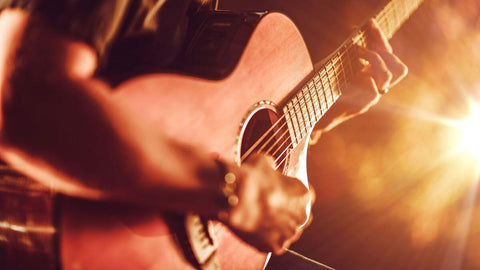
The inception of the guitar unfolds a mesmerizing saga spanning epochs and continents, epitomizing the brilliance and ingenuity of humanity. From its modest origins to its contemporary eminence, the guitar has etched an enduring legacy in the realms of music and culture globally. In this exhaustive exploration, we plunge into the inception, progression, and socio-cultural resonance of this emblematic instrument.
Genesis of a Symbol: Ancient Roots

The genesis of the guitar traces back to antiquity, where ancient societies fashioned primitive stringed instruments from materials like timber, animal skins, and botanical fibers. These early antecedents, comprising instruments like the lute, kithara, and oud, laid the groundwork for the evolution of the modern guitar.
It was during the Renaissance epoch that the guitar began to take form, heralded by the advent of the vihuela and its Spanish counterpart, the guitarra. These instruments, characterized by their curved forms, rounded backs, and intricate fretwork, foreshadowed the design nuances of contemporary guitars.
Progression Across Eras: Renaissance to Baroque
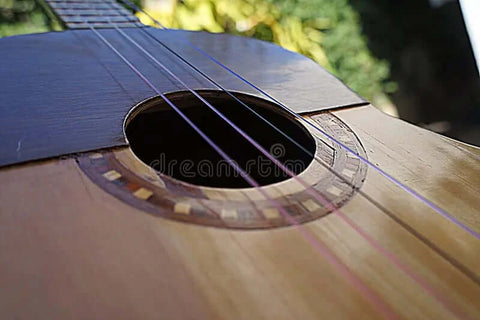
The Renaissance and Baroque epochs witnessed notable strides in guitar craftsmanship and technique. European artisans conducted experiments with diverse materials and construction methodologies, resulting in enhancements in tonal quality and playability.
The incorporation of a fifth string into the guitar's structure broadened its sonic spectrum, while the transition from gut to nylon strings bolstered its resilience and resonance. As the guitar garnered favor among the elite and affluent classes, it became synonymous with sophistication and refinement, securing a niche in courtly music and chamber orchestras.
Emergence of the Modern Guitar: 19th Century and Beyond

The 19th century marked the onset of a new epoch of innovation and experimentation in guitar design. Antonio de Torres, a pioneering Spanish luthier, spearheaded a revolution in the instrument's evolution with his pioneering bracing methodologies and body configurations. His innovations, including the iconic Spanish guitar, established the benchmark for classical guitar craftsmanship and performance.
Concurrently, on the American continent, luthiers pioneered the evolution of the steel-string guitar, integrating metal strings and larger body dimensions to augment volume and projection. The introduction of the Dreadnought design by the Martin Guitar Company further entrenched the guitar's position in popular music genres such as folk, country, and blues.
Socio-Cultural Influence: Guitar in Pop Culture

As the guitar metamorphosed, it transcended its classical origins to become an emblem of defiance, creativity, and self-expression. The advent of the rock 'n' roll revolution in the 1950s witnessed guitar virtuosos like Chuck Berry, Elvis Presley, and Buddy Holly captivating audiences with their dynamic performances and infectious melodies.
The 1960s ushered in an era of societal upheaval and dissent, with folk minstrels such as Bob Dylan and Joan Baez harnessing their guitars as instruments of political activism and societal reform. In the ensuing decades, the guitar continued to mold popular culture, influencing fashion, cinema, and literature, inspiring countless musicians to grasp the instrument and inscribe their narratives.
Contemporary Trends: Ingenuity and Plurality
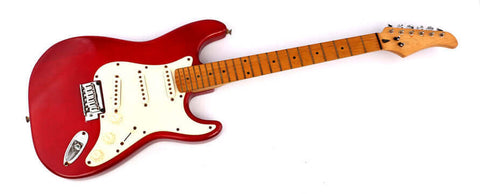
In the digital era, the guitar retains its relevance and versatility, adapting to the evolving landscape of music creation and consumption. From electric guitars furnished with cutting-edge effects processors to acoustic-electric hybrids amalgamating tradition with technology, innovation knows no bounds.
Furthermore, the ascendancy of online platforms such as YouTube, Instagram, and TikTok has democratized music production and dissemination, empowering aspiring musicians to exhibit their talents to a global audience. Whether wielded by a seasoned virtuoso or a novice strummer, the guitar endures as a wellspring of inspiration and enchantment, offering boundless avenues of expression.
List of Famous Guitars Throughout History:
1. Stradivarius Guitar: Crafted by Antonio Stradivari in the 17th century, this guitar is renowned for its exquisite craftsmanship and unparalleled sound quality.

2. Martin D-28: A legendary acoustic guitar favored by folk and bluegrass musicians, known for its rich tone and exceptional playability.
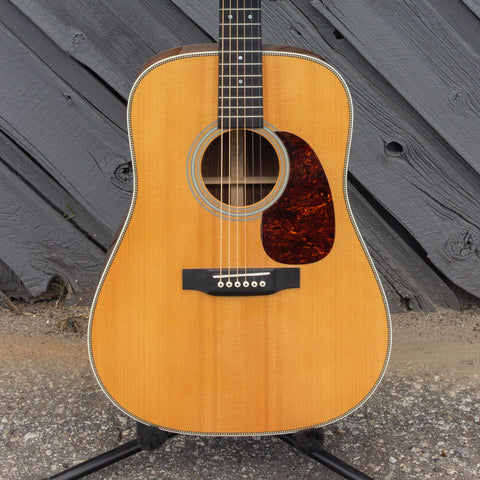
3. Gibson Les Paul: Introduced in the 1950s, this iconic electric guitar has been wielded by rock gods such as Jimmy Page, Slash, and Eric Clapton.
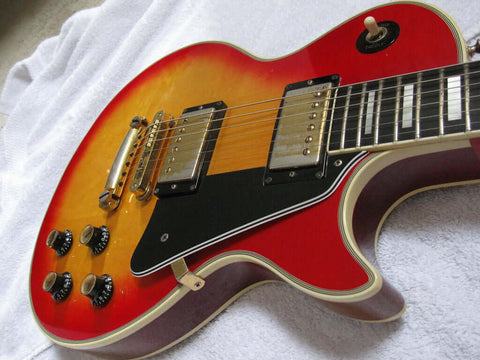
4. Fender Stratocaster: A symbol of rock 'n' roll rebellion, this electric guitar is beloved for its sleek design and versatile tone.
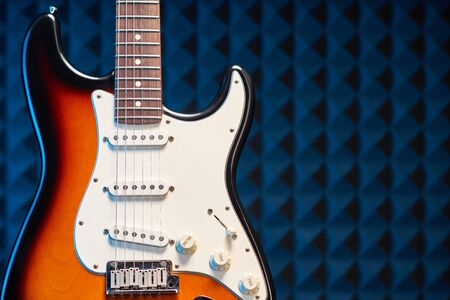
5. Gibson SG: With its distinctive double-cutaway design, this electric guitar has graced the stages of countless rock concerts since its debut in the 1960s.

6. Martin OM-45 Deluxe: A luxurious acoustic guitar adorned with intricate inlays and premium materials, coveted by collectors and musicians alike.
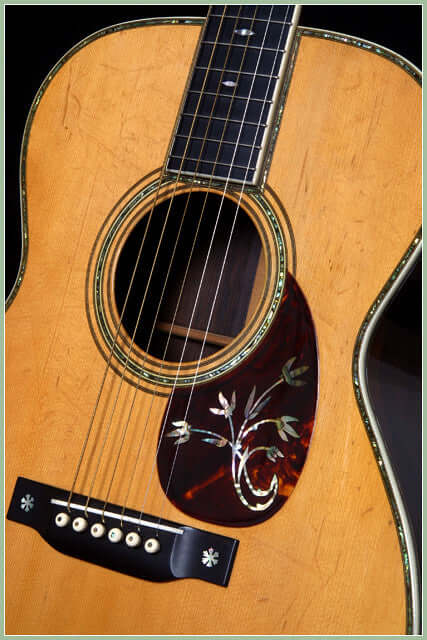
7. Gibson Flying V: This futuristic-looking electric guitar, introduced in the late 1950s, has been associated with hard rock and heavy metal musicians for its striking design and aggressive tone.
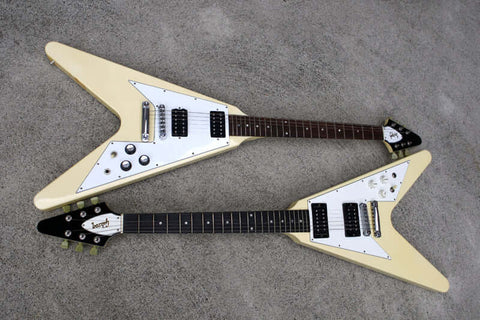
8. Fender Telecaster: Known for its twangy sound and enduring simplicity, this electric guitar has been a staple in country, rock, and blues music since its introduction in the 1950s.
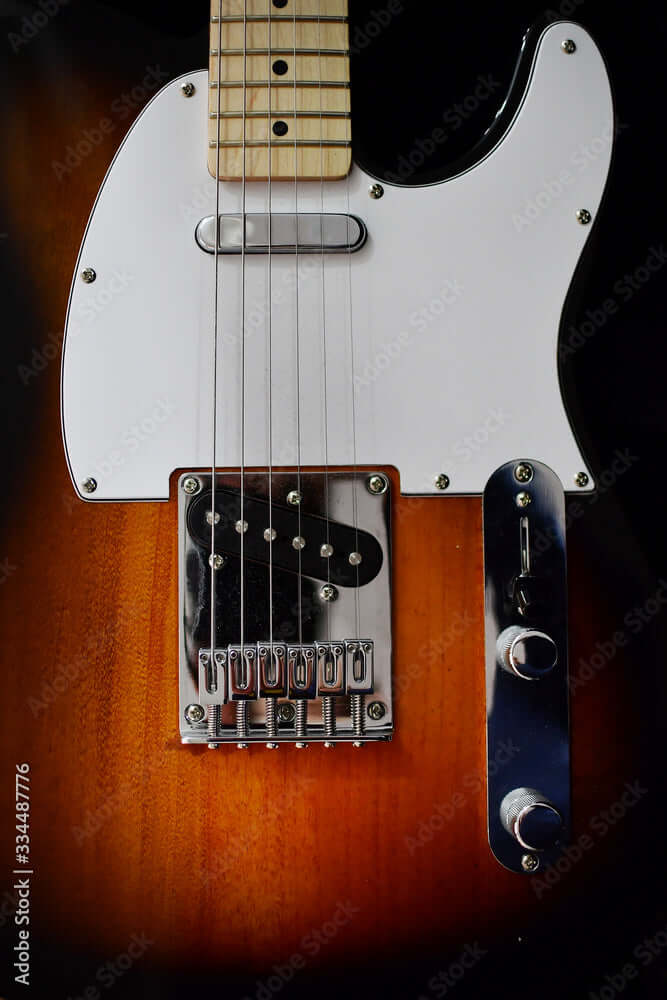
9. Gibson ES-335: A semi-hollow body electric guitar prized for its warm, versatile tone, favored by jazz, blues, and rockabilly musicians.
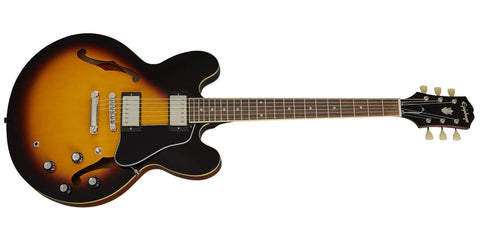
10. PRS Custom 24: Crafted by Paul Reed Smith, this electric guitar boasts impeccable craftsmanship and a wide range of tonal options, making it a favorite among modern rock and metal players.
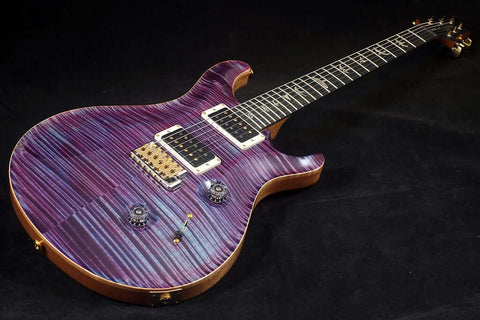
11. Rickenbacker 360/12: This iconic electric guitar, famously played by George Harrison of The Beatles, features a distinctive jangly sound produced by its 12-string configuration.



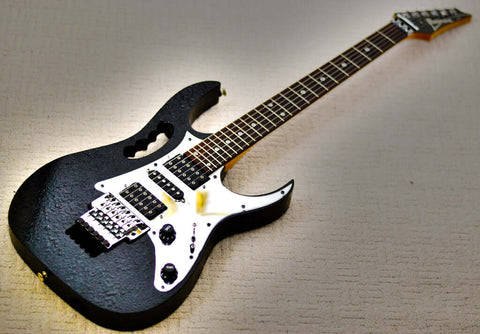
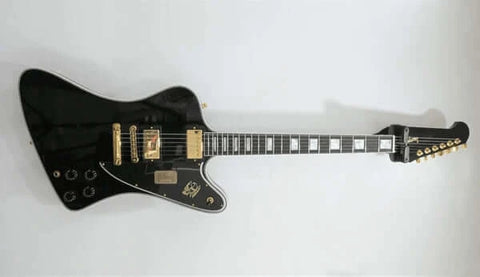

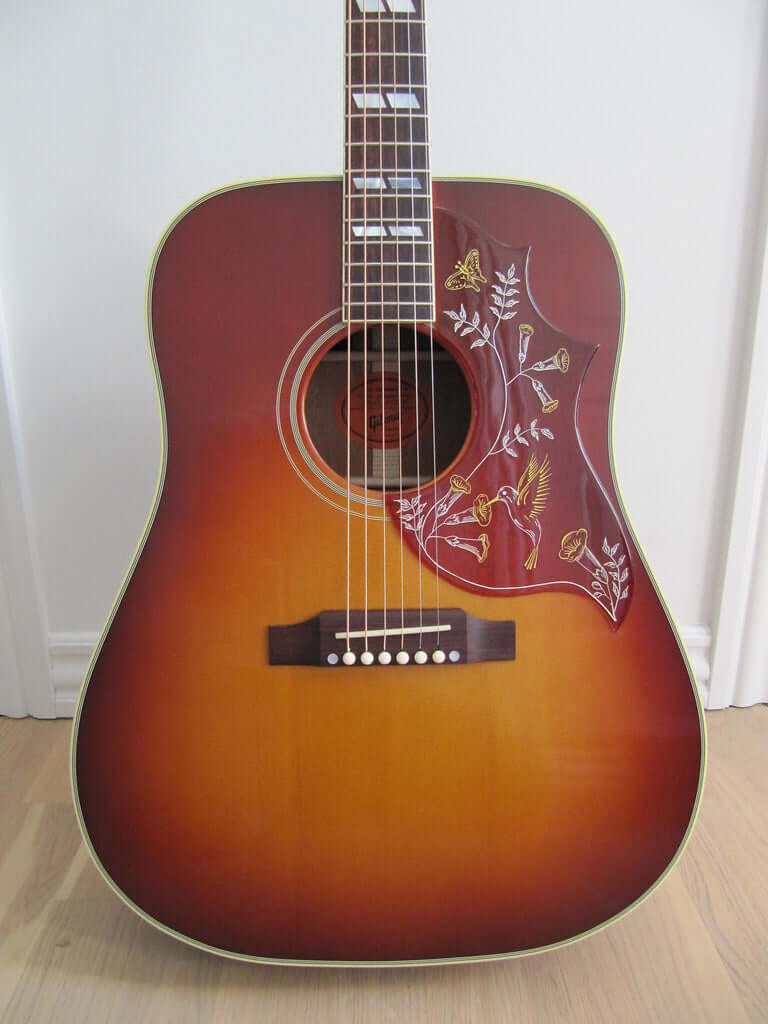
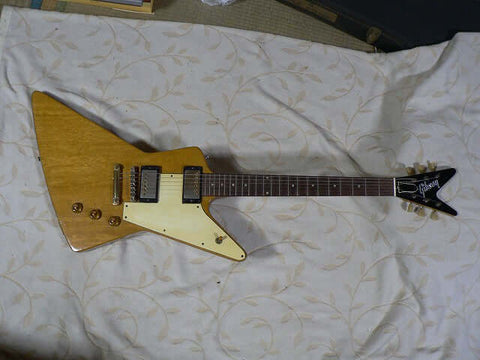
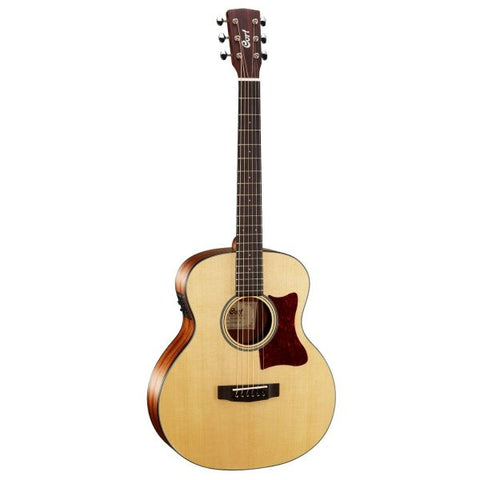
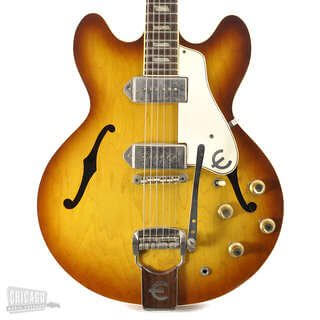
FAQ: Answering Common Questions
1. What is the significance of the guitar in flamenco music?
The guitar plays a central role in flamenco music, providing rhythmic accompaniment and melodic embellishments to dancers and singers. Its percussive techniques and intricate melodies are essential elements of the flamenco tradition.
2. How do you maintain and care for a vintage guitar?
Maintaining a vintage guitar involves regular cleaning, humidification, and proper storage to prevent damage from environmental factors. Periodic inspections and adjustments by a qualified luthier can also help preserve its playability and value.
3. What are some famous guitars known for their unique paint jobs or finishes?
Guitars such as the Fender Stratocaster "Blackie", Stevie Ray Vaughan's "Number One" Stratocaster, and Eddie Van Halen's "Frankenstein" are renowned for their distinctive paint jobs and iconic finishes, which have become synonymous with their respective owners' musical legacies.
4. How do you choose the right guitar for a beginner?
When selecting a guitar for a beginner, factors to consider include budget, playability, and musical preferences. Acoustic guitars with smaller body sizes or electric guitars with slim neck profiles are often recommended for beginners due to their ease of play and versatility.
5. What are the differences between acoustic and electric guitars?
Acoustic guitars produce sound acoustically, using the vibration of the strings to resonate within the body of the instrument. Electric guitars, on the other hand, require amplification to produce sound, utilizing magnetic pickups and electronic components to amplify and shape the signal.
6. Can left-handed people play a right-handed guitar?
Yes, left-handed individuals can play a right-handed guitar by either restringing the instrument or learning to play it in its original orientation. Some left-handed players prefer to use specially designed left-handed guitars, which feature a mirrored configuration of the standard right-handed model.
7. What are some famous acoustic guitars used in live performances?
Acoustic guitars such as the Taylor 814ce, Martin HD-28, and Gibson J-45 are popular choices among musicians for live performances due to their superior sound quality, durability, and stage presence.
8. How do you prevent fret buzz on a guitar?
Fret buzz can be minimized by adjusting the guitar's neck relief, string action, and nut height to ensure proper clearance between the strings and frets. Additionally, using lighter gauge strings and maintaining optimal humidity levels can help prevent fret buzz caused by changes in environmental conditions.
9. What are some famous guitar solos in rock music history?
Legendary guitar solos such as Eddie Van Halen's "Eruption", Jimi Hendrix's "Voodoo Child (Slight Return)", and David Gilmour's "Comfortably Numb" are celebrated for their technical virtuosity, emotive expression, and enduring influence on rock music.
10. How do you tune a guitar to alternate tunings?
To tune a guitar to alternate tunings such as open D or drop D, players adjust the tension of the strings by tuning them to specific pitches, typically using a chromatic tuner or tuning fork as a reference. Common alternate tunings include DADGAD, Open G, and Drop C, each offering unique chord voicings and sonic possibilities.
11. What are some famous guitars used in iconic album covers?
Guitars featured on iconic album covers include George Harrison's "Rocky" Stratocaster on The Beatles' "Sgt. Pepper's Lonely Hearts Club Band", Johnny Ramone's Mosrite Ventures II on Ramones' "Rocket to Russia", and Kurt Cobain's Fender Jag-Stang on Nirvana's "In Utero", among others.
12. What are the benefits of using a guitar capo?
A guitar capo allows players to change the pitch of open strings by clamping across the fretboard, effectively raising the key of the instrument without altering fingerings. Capos are commonly used to transpose songs to different keys, create unique voicings, and simplify chord shapes for easier playing.
13. What are some famous guitars known for their historical significance?
Guitars such as Willie Nelson's "Trigger" Martin N-20, Eric Clapton's "Blackie" Stratocaster, and Bob Dylan's "Dylan" Martin D-28 are revered for their historical significance, having been wielded by legendary musicians and played a pivotal role in shaping the course of music history.
14. How do you clean and polish a guitar?
To clean and polish a guitar, use a soft, lint-free cloth to remove dust and fingerprints from the body, neck, and hardware. For stubborn dirt or grime, lightly dampen the cloth with water or a mild guitar cleaner, taking care to avoid excessive moisture near the electronics or fretboard.
15. What are some famous guitars known for their unique body shapes?
Guitars such as the Gibson Explorer, Gretsch White Falcon, and Rickenbacker 325 are celebrated for their distinctive body shapes, which range from futuristic to retro-inspired designs and have become iconic symbols of musical innovation and creativity.
16. How do you prevent guitar neck warping?
To prevent guitar neck warping, store the instrument in a stable environment with consistent temperature and humidity levels, avoiding exposure to extreme heat, cold, or moisture. Regularly inspect the neck for signs of bowing or twisting and make adjustments as needed to maintain proper alignment.
17. Can you play classical music on an electric guitar?
Yes, classical music can be played on an electric guitar by adapting traditional classical guitar repertoire to fit the instrument's tonal characteristics and playing techniques. Many electric guitarists incorporate classical elements into their compositions, arrangements, and improvisations, creating a unique fusion of styles.
18. What are some famous guitars known for their association with blues music?
Guitars such as B.B. King's "Lucille" Gibson ES-355, Stevie Ray Vaughan's "Number One" Stratocaster, and Robert Johnson's "King of the Delta Blues" Gibson L-1 are revered for their association with blues music and the legendary musicians who wielded them, shaping the genre's sound and style.
19. How do you prevent guitar strings from breaking?
To prevent guitar strings from breaking, regularly inspect the strings for signs of wear, corrosion, or damage, and replace them as needed. Proper string installation, tuning, and maintenance can also help extend string life and minimize the risk of breakage during playing.
20. What are some famous guitars known for their association with jazz music?
Guitars such as Django Reinhardt's Selmer Maccaferri, Wes Montgomery's Gibson L-5, and Pat Metheny's Ibanez PM100 are renowned for their association with jazz music, influencing the genre's harmonic vocabulary, improvisational techniques, and instrumental virtuosity.
Conclusion
Exploring the annals of guitar history reveals a multifaceted tapestry interwoven with ingenuity, ingenuity, and societal import. From its ancient origins to contemporary innovations, the guitar has metamorphosed into a revered instrument cherished by musicians and aficionados globally.
Its enduring legacy traverses diverse musical genres, continents, and epochs, leaving an indelible imprint on the realm of music, culture, and civilization. As we delve into the historical saga of guitars, we exalt not only the instrument itself but also the myriad narratives, harmonies, and recollections it has evoked. Whether plucked beneath celestial canopies or amplified on the grand stage, the guitar persists in enchanting hearts and spirits, serving as a poignant reminder of the timeless potency of music to unify, invigorate, and surpass.
Author bio:

Dr. Robin Alexander
Dr. Robin Alexander, an MD Pathologist and passionate guitarist, combines his love for music and science. As a guitar enthusiast, he shares valuable insights and tips on guitar playing here at Guitarmetrics, helping musicians enhance their skills and enjoy their musical journey.








